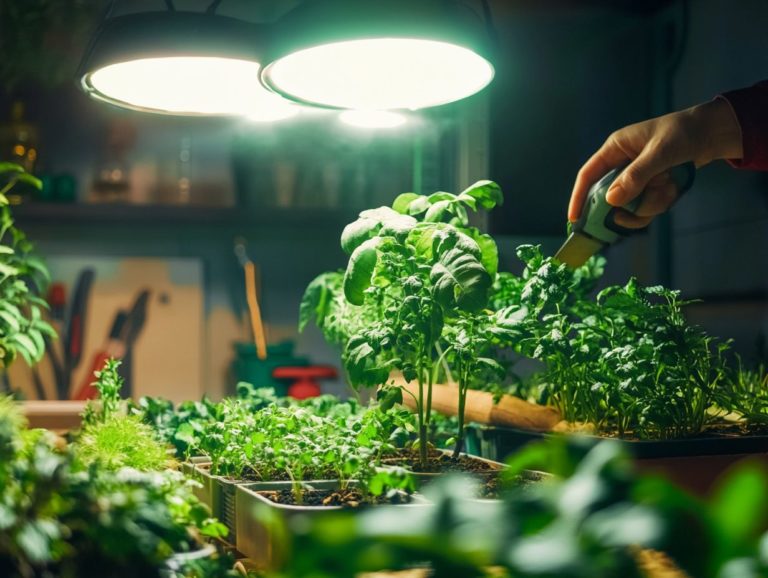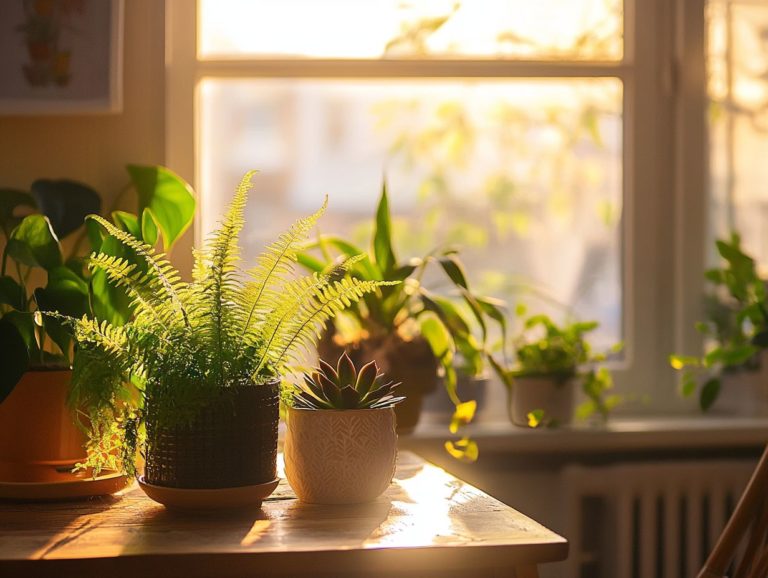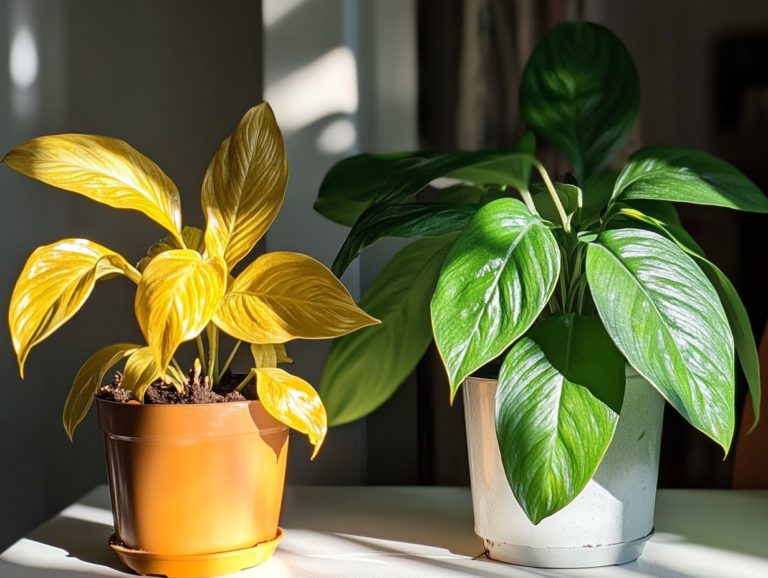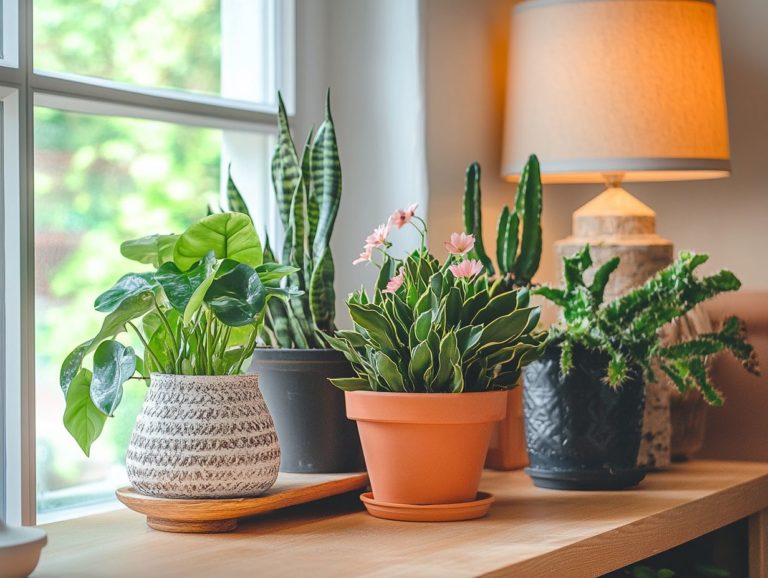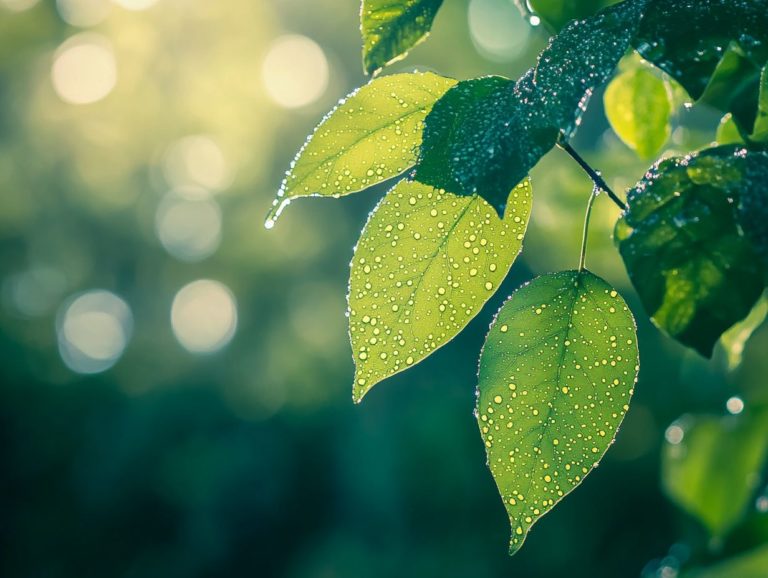The Role of Natural Light in Plant Growth
Light is more than just a source of illumination; it s essential for thriving plant growth.
Understanding the role of light, especially the benefits of natural sunlight, will help your gardening thrive like never before! This article covers the basics of plant biology and the intricacies of how plants use sunlight to make their food.
It also examines the differences between natural and artificial light, showcasing the unique advantages that sunlight offers.
You’ll discover how seasonal changes and geographic factors influence light availability, along with practical tips to maximize natural light for your indoor plants.
Whether you re an experienced gardener or just beginning, harnessing the power of light can transform your plant care routine.
Contents
Key Takeaways:
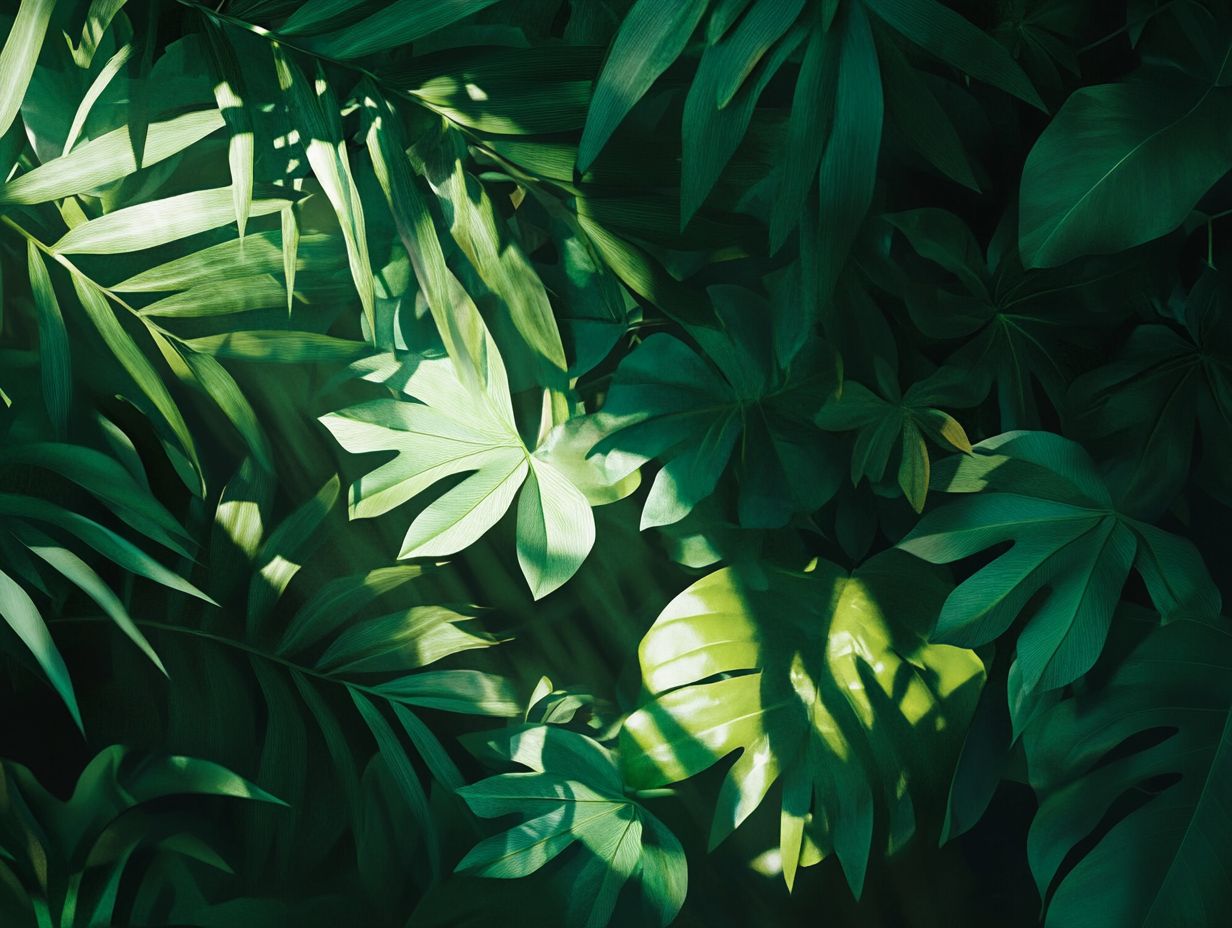
- Natural light is essential for plant growth as it helps with photosynthesis, the way plants use sunlight to make their food.
- Compared to artificial light, natural light provides a wider range of light that is beneficial for plant growth and development.
- You can maximize natural light for indoor plants by considering seasonal changes and geographic location, and implementing optimal lighting techniques.
The Importance of Light in Plant Growth
Light is crucial for plant growth, affecting key processes like photosynthesis, chlorophyll production, and overall growth responses. Whether sourced from the sun or artificial means, the type and quality of light provided significantly impact the health and productivity of your indoor plants.
By understanding how light intensity and spectrum relate to various plant species, you can optimize your indoor environments. This knowledge will foster healthier plants and enhance the biological diversity within your space.
Basic Plant Biology and Photosynthesis
Understanding the fundamentals of plant biology, especially how plants use sunlight to make their food, is vital to appreciating how light affects growth responses. Photosynthesis, primarily fueled by chlorophyll, harnesses light energy to transform carbon dioxide and water into glucose and oxygen, which are essential for a plant’s health and vitality.
This process is crucial for maintaining ecosystem balance and supporting life on Earth. Chlorophyll absorbs specific wavelengths of light, mainly in the blue and red regions of the spectrum, optimizing energy absorption. It’s fascinating how different light conditions can significantly influence photosynthesis rates and plant growth!
For instance, ambient light levels and quality whether it s full-spectrum or skewed can dramatically affect a plant’s ability to engage in photosynthesis. This variability in light conditions ultimately determines the rate of growth and the overall health and resilience of various plant species.
The Different Types of Light for Plants
Plants flourish under varying lighting conditions, primarily natural and artificial light, each with unique characteristics that significantly impact their growth and well-being.
Natural light provides a full spectrum essential for photosynthesis, nurturing plants in their most natural state. Meanwhile, artificial light sources such as fluorescent lamps and LEDs are increasingly popular in controlled indoor settings, effectively supplementing or even replacing sunlight for optimal growth.
Start maximizing your plant’s health by optimizing their light today!
Natural Light vs Artificial Light
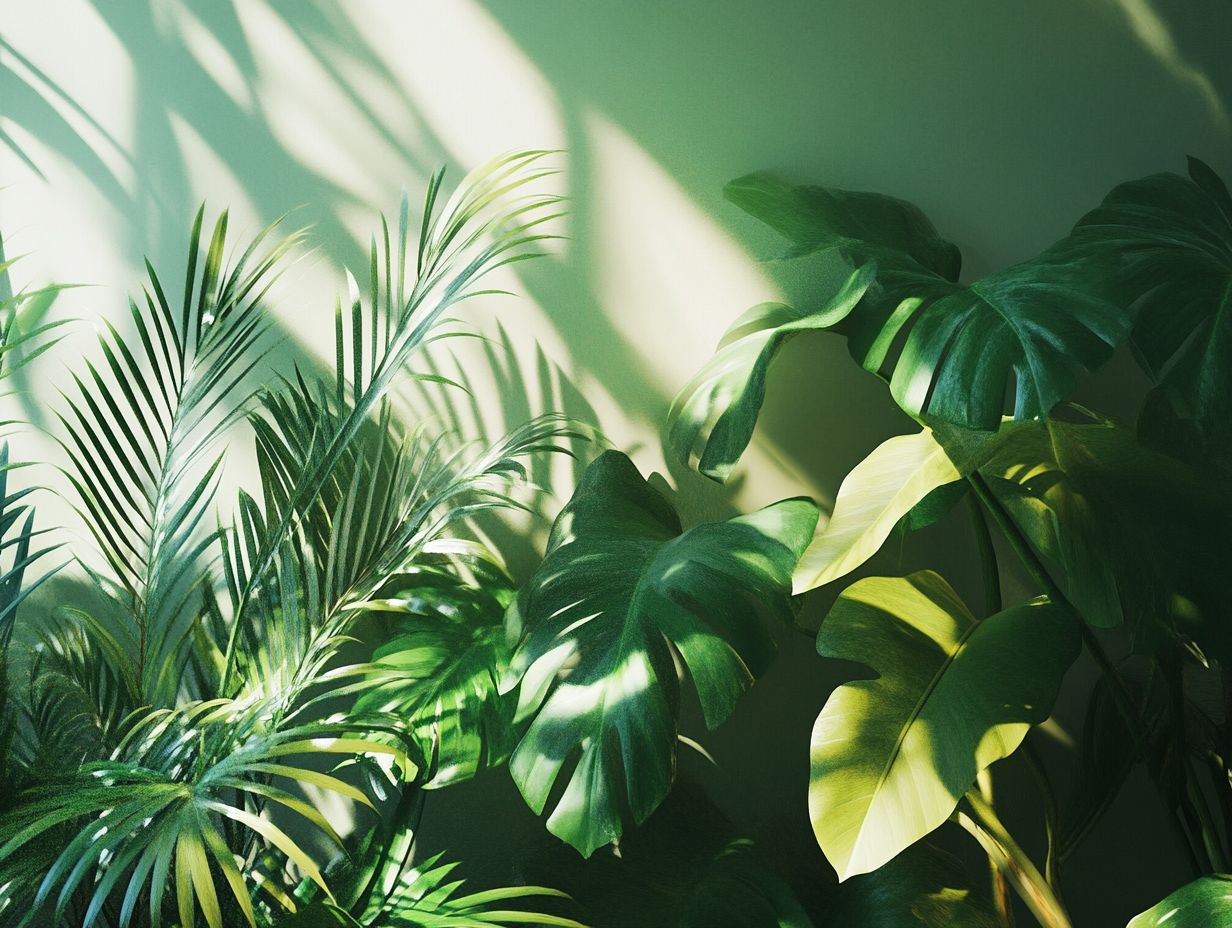
Natural light and artificial light stand as two primary forces in the realm of plant growth, each bringing its own set of advantages and challenges concerning light quality and intensity. While natural light supplies a broad spectrum vital for effective photosynthesis, artificial lighting presents tailored solutions that cater specifically to the needs of plants in indoor environments.
As an indoor gardener, you may often find yourself grappling with the decision of which type of light to employ for optimal growth. Natural light changes with the seasons and weather, causing inconsistent energy levels for your plants, occasionally resulting in stunted growth or compromised health.
On the other hand, artificial light provides a steady intensity and can be meticulously designed to closely mimic the natural spectrum. This consistency enables you to cultivate ideal conditions for your plants throughout the year. However, improper use of artificial lighting can introduce excessive heat or insufficient light levels, potentially impacting photosynthesis rates and the overall vitality of your indoor plants.
Understanding the differences between natural and artificial light can help you choose the best lighting for your plants.
Benefits of Natural Light for Plants
Natural light provides a multitude of benefits for plant growth, greatly enhancing both growth rates and overall health while optimizing the process of photosynthesis. When plants bask in ample natural light, they enjoy improved chlorophyll content and elevated energy production, resulting in resilience and robustness that surpasses those dependent solely on artificial light.
The enhanced growth and vitality of your plants basking in natural light can be attributed to improved photosynthesis rates and increased chlorophyll content, both of which drive robust growth responses. You’ll notice this particularly in your indoor plants, where the science of light and plant care can significantly elevate their vitality and flowering potential.
Research shows that natural light helps plants grow better and become more resistant to stress. For example, studies indicate that houseplants grown under natural sunlight can exhibit up to 50% more growth than those relegated to artificial light.
This growth comes from more chlorophyll, which helps plants absorb sunlight and turn it into energy. Further experimentation has revealed that indoor species like pothos and snake plants thrive when exposed to a light spectrum that mimics natural conditions, resulting in accelerated growth and improved overall health.
Such insights emphasize the irreplaceable value of natural light in your indoor gardening endeavors.
Factors Affecting Natural Light for Plants
Many things affect how much natural light your plants get. Seasonal changes, geographic location, and varying light intensity all play a crucial role in determining how much surrounding light reaches your indoor greenery.
These elements directly affect the growth and health of your plants throughout the year, shaping their vitality and resilience. Understanding these factors is crucial for creating the best environment for your plants to thrive.
Seasonal Changes and Geographic Location
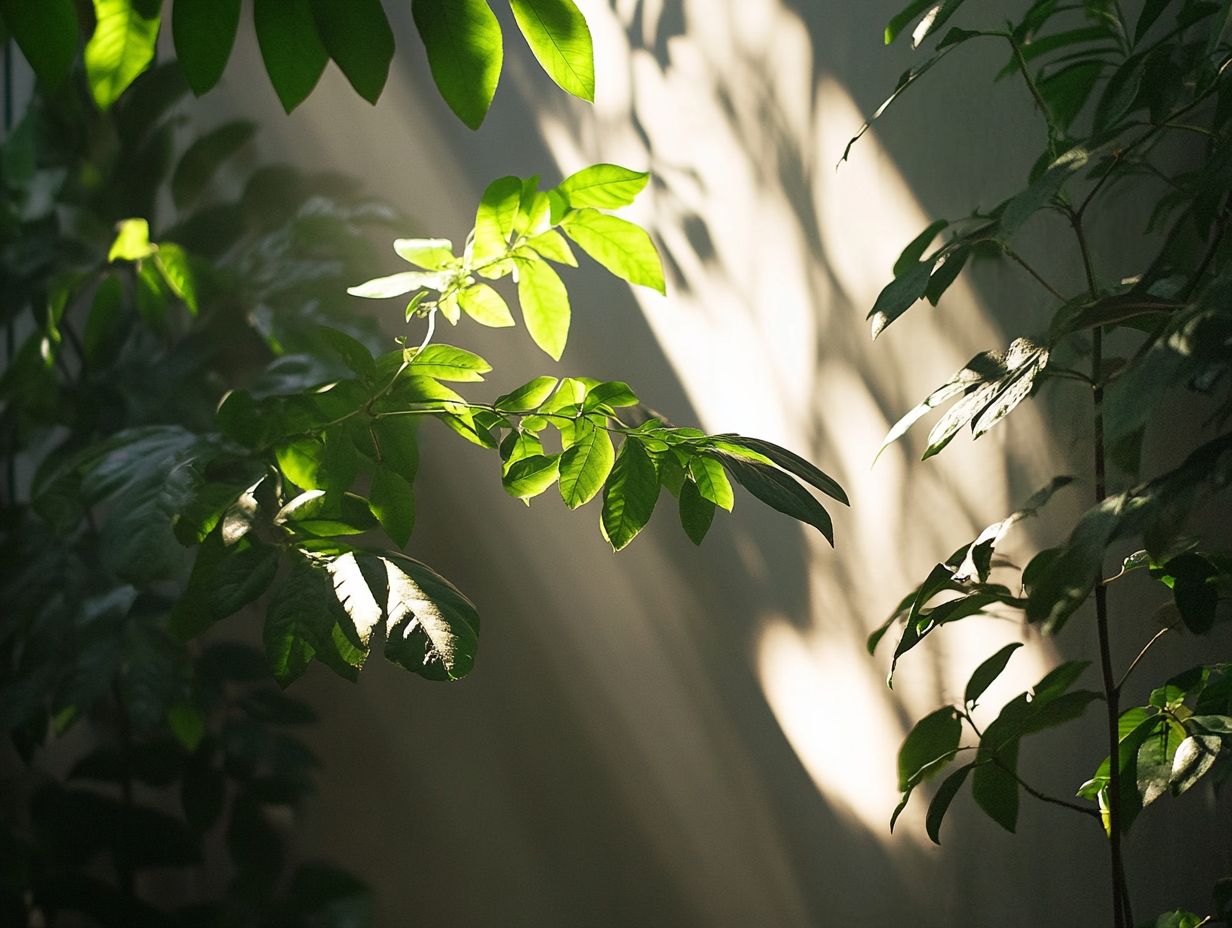
Seasonal changes and geographic location significantly influence the light intensity and growing conditions available to your plants. Different regions experience varying lengths and intensities of sunlight throughout the year, which can profoundly impact the growth and health of your indoor greenery.
For example, if you re in a tropical area, you re likely basking in consistent sunlight year-round. This creates ideal conditions for a variety of houseplants.
In contrast, regions with distinct seasons, like parts of North America, undergo drastic fluctuations in daylight. Here, winter can dramatically diminish light availability, compelling you to rethink your lighting arrangements.
This might mean incorporating special lights that help plants grow indoors during the darker months or relocating your plants closer to windows that catch more sunlight. These simple adjustments are key to helping your indoor plants thrive and flourish!
By adapting your care routine to the natural ebb and flow of seasonal light variations, you nurture a vibrant indoor oasis.
Maximizing Natural Light for Indoor Plants
To maximize natural light for your indoor plants, it’s essential to strategically position them and understand the various techniques that enhance their light exposure. By optimizing your indoor environment and employing effective lighting systems, you can enable your plants to achieve their full growth potential while reaping the many benefits that natural light offers.
Tips and Techniques for Optimal Lighting
- Position your plants strategically near windows, allowing them to bask in natural sunlight while considering the changing intensity throughout the day.
- If natural light is scarce, integrating special lights that help plants grow indoors can be a game changer. These lights mimic sunlight and can be tailored to meet the specific needs of different plant species.
- Paying attention to humidity levels is also important. Maintaining a comfortable temperature can amplify the benefits of your thoughtful lighting setup.
This holistic approach will foster a thriving indoor garden, allowing your plants to develop lush foliage and vibrant blooms that truly stand out.
Frequently Asked Questions
What is the role of natural light in plant growth?
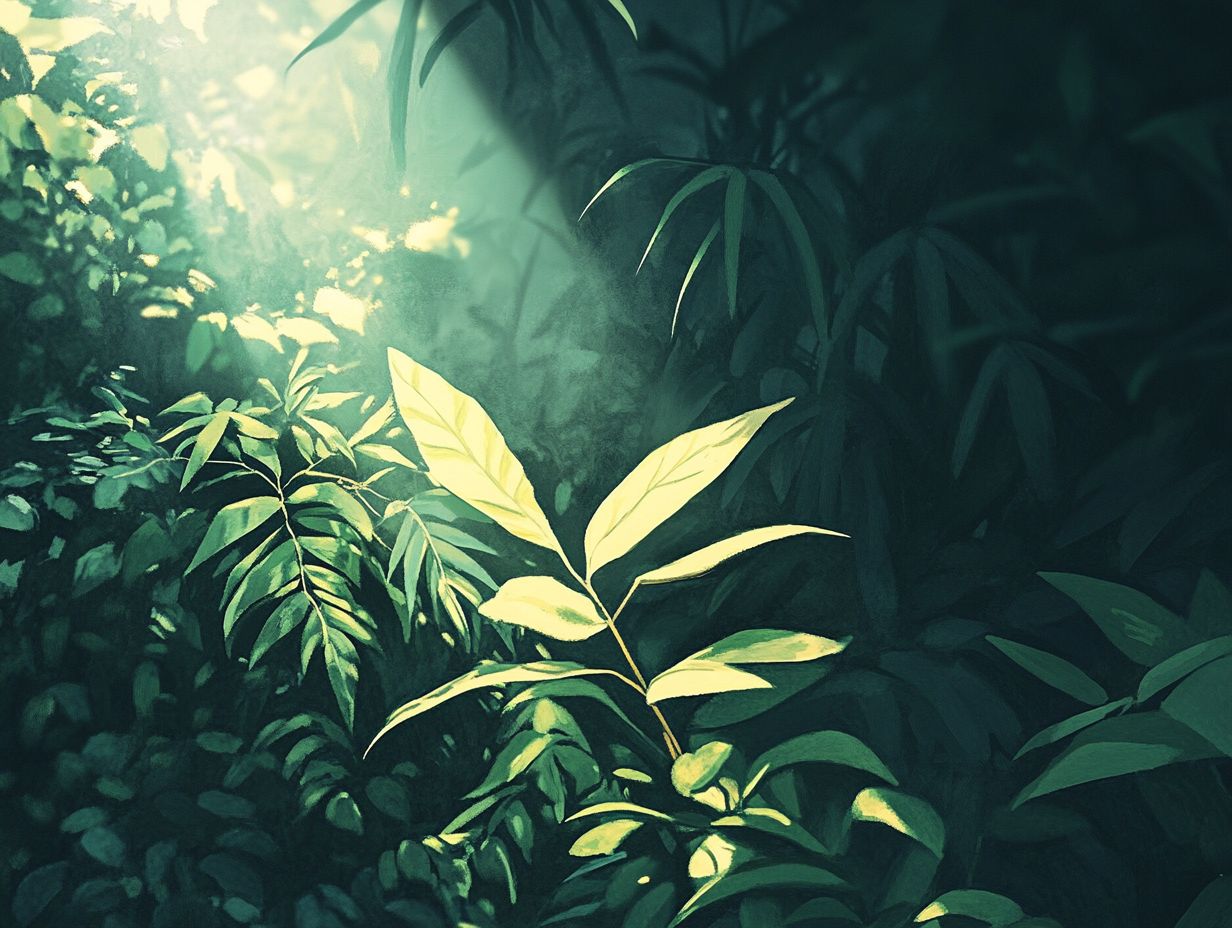
Natural light plays a crucial role in plant growth and development. It provides the energy for photosynthesis, which is essential for producing the plant’s food and promoting its growth.
How does natural light affect plant growth?
Natural light affects plant growth in multiple ways. It provides energy for photosynthesis, regulates the plant’s circadian rhythm, and influences the production of growth hormones.
What types of natural light are best for plant growth?
Plants require a full spectrum of light for optimal growth. This includes both red and blue light, which are essential for photosynthesis, as well as other wavelengths that influence different stages of plant growth.
Can plants grow without natural light?
While some plants can survive in low-light conditions, natural light is crucial for their growth. Without enough light, plants may become leggy, weak, and struggle to produce enough food for their own sustenance.
How much natural light do plants need?
The amount of natural light required for a plant depends on its species and stage of growth. Generally, most plants need at least 6-8 hours of sunlight per day, but some may require more or less.
What are some ways to increase natural light for indoor plants?
If you are growing plants indoors, you can increase natural light by placing them near windows or using artificial grow lights. You can also rotate the plants regularly to ensure all sides receive an adequate amount of light.
Now that you understand how to maximize natural light for your indoor plants, why not start implementing these techniques today? Share your experiences and tips with fellow plant lovers!

